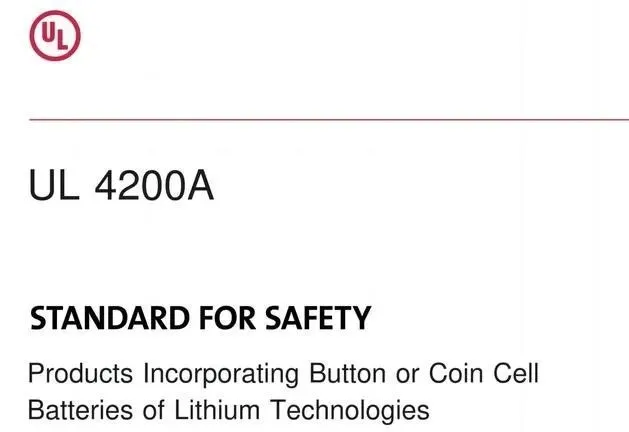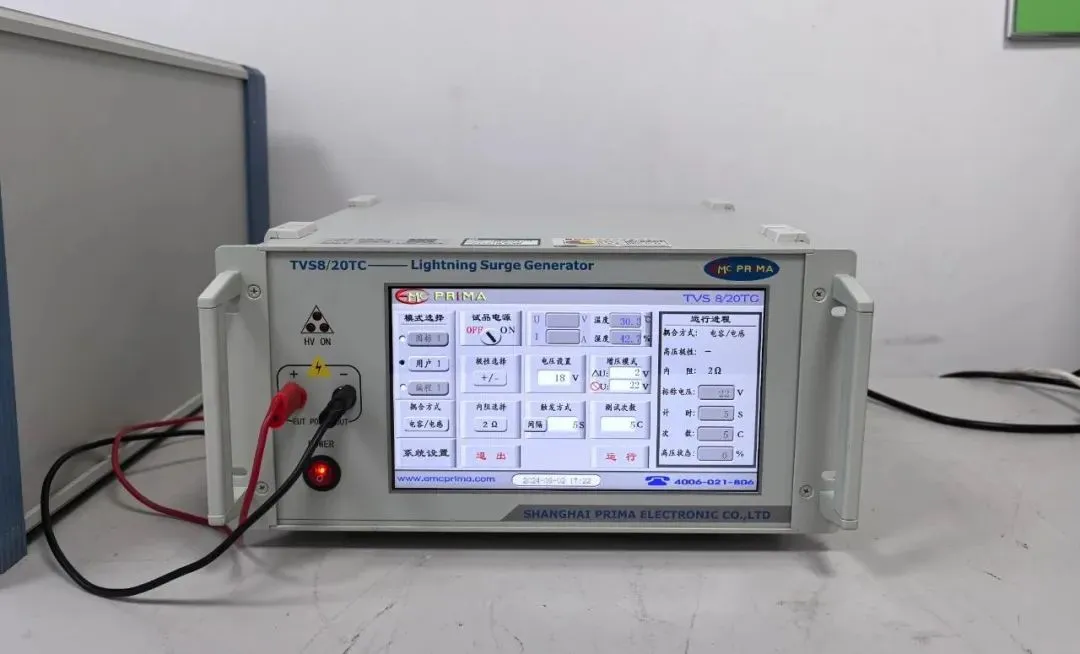The standard UL 4200A:2023 for consumer products containing button/coin batteries officially came into effect on October 23, 2023. 16 cfr 1263 also came into effect on the same day. The U.S. Consumer Product Safety Commission (CPSC) will grant a 180-day enforcement transition period from September 21, 2023 to March 19, 2024. The enforcement date of 16 CFR 1263 is March 19, 2024.

UL 4200a was released in February 2015 and has been revised five times. Before the CPSC issued the requirements, many end product standards had clearly stated that products containing button batteries must meet the requirements of UL 4200A. These end product standards include UL 1082, UL 982, UL 1026, UL 1081, UL 507, etc. The regulations released by the CPSC this time further expand the mandatory scope of UL 4200A. As long as the product contains a button battery, it needs to meet the requirements of UL 4200A.
Applicable product range
1. These requirements cover household products that contain or may use button batteries or coin batteries.
2. These requirements do not include products that exclusively use zinc-air battery technology.
3. These requirements do not include toy products that comply with the battery accessibility and labeling requirements of ASTM F963, the Toy Safety Standard.
4. These requirements apply to consumer products containing button batteries or coin batteries.
They do not apply to products which, by reason of their dedicated purpose and instructions, are not intended to be used where children are likely to come into contact with them, such as products intended for professional or commercial use where children are not normally or usually present.
5. These requirements are intended to supplement other safety requirements for products containing button cells or coin cells, rather than replace specific requirements contained in other safety standards to mitigate the physiological hazards of button cells or coin cells.
Definition of Button Cell or Coin Cell
Consumer (household) products equipped with button lithium batteries with a diameter of ≤32mm and a diameter greater than the height (but there may be additional supplementary requirements in some terminal product standards).
Structural requirements
Products using button/coin cells shall be designed to minimize the risk of a child removing, ingesting or inhaling the battery. Battery compartments must be secuRED so that they require a tool or at least two separate and simultaneous hand movements to open, and these two opening movements cannot be combined into one movement by one finger. And after the performance test, the battery compartment door/lid shall not open and shall remain functional. The battery shall be inaccessible.
Testing requirements
1. Abuse test:
a. Drop portable products 3 times and handheld products 10 times (each time from a height of 1 meter onto a horizontal hard surface).
b. The outer casing or battery cavity cover and door must withstand a 2J impact test for 3 times.
c. Rolling test: A force of 330N is applied to the exposed surface for 10 seconds, and the force is applied through a plane of approximately 100mm x 250mm.
d. After tests a, b, and c, apply a force of 45N for 10 seconds using the test rod 11 of IEC 61032. The battery shall not become accessible. During the test, the battery compartment cover and door do not need to be opened and remain in normal function.
2. Installation firmness test:
For the mounting security of "battery not removable or replaceable by the user", the battery shall not be detached by a hook using an outward force of 20 Newtons for 10 seconds.
Warning requirements for instructions:
Instructions and manuals, if any, shall include all applicable markings from Figure 7B.1 or Figure 7B.2 and the following instructions:
a) Statement "Remove and immediately recycle or dispose of used batteries according to local regulations, keeping away from children. Do not discard batteries in household waste or incinerate."
b) The statement “Even a used battery can cause serious injury or death.”
c) The statement “Call your local poison control center for treatment information.”
d) A statement indicating compatible battery types (e.g. LR44, CR2032).
e) A statement indicating the nominal voltage of the battery.
f) The statement “Non-rechargeable batteries must not be recharged.”
g) Statement "Do not force discharge, recharge, disassemble, heat above (rated temperature specified by the manufacturer), or incinerate. Doing so may result in injury from exhaust, leakage, or explosion resulting in cheMICal burns."
Products with replaceable button/coin cell batteries should also include:
a) Statement "Make sure to install the battery correctly according to the polarity (+ and -)."
b) The statement “Do not mix old and new batteries, or batteries of different brands or types, such as alkaline, carbon-zinc, or rechargeable batteries.”
c) The statement “Remove and immediately recycle or dispose of batteries from devices that are not used for an extended period of time, according to local regulations.”
d) The statement "Always fully secure the battery compartment. If the battery compartment does not close securely, stop using the product, remove the batteries, and keep it away from children."
Products with non-replaceable button/coin cells should also include a statement indicating that the product contains a non-replaceable battery.












